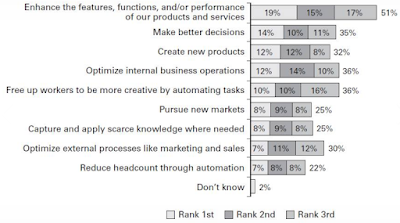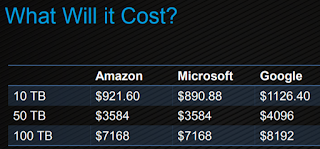Benefits Sought from Cognitive Technologies

“Cognitive technologies” include machine learning, deep learning neural networks, natural language processing, rule engines, robotic process automation, and combinations of these capabilities for higher-level applications. Benefits sought from Cognitive Technologies, by ranking according to a Deloitte “Cognitive Aware” survey - Enhance the features, functions, and/or performance of our products and services Make better decisions Create new products Optimize internal business operations Free up workers to be more creative by automating tasks Pursue new markets Capture and apply scarce knowledge where needed Optimize external processes like marketing and sales Reduce headcount through automation


